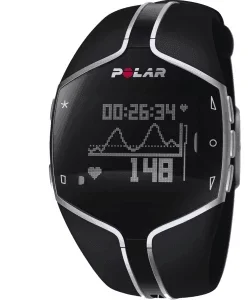Warm-Ups On & Off the Treadmill

Why are warm-ups important? Just like other materials, muscle tissue doesn’t absorb shock best when it’s cold. Warming up helps prevent injuries by gradually delivering more blood to your heart and other muscles. In this article we describe warm-ups that you can do before and during treadmill exercise.
Warming Up Before Treadmill Workouts
It’s best to warm up your muscles even before you step onto the treadmill. Static exercises can be done without props, but a wall and table or chair can be useful. Using light weights would be beneficial too. Here are some warm-up ideas:
- Stretch your back. Reach for your toes, and reach past them to behind your feet if possible. Hold the position for 12 seconds.
- Lay on the floor and bring your knees in tight to your chest. Cross your arms to help hold the position for 20 seconds. Then relax and repeat.
- If you’re short, sit in a chair in which your feet don’t hit the floor. If you’re not pint-sized, sit on a table with your legs over one side. Place a light weight on the tops of your feet. Flex your ankles and hold the position for 12 to 15 seconds. Then rest and repeat.
- Place your back against a wall. Plant your feet about a foot away and at the width of your shoulders. Raise your toes as high as you can while keeping your heels on the floor. Lower and raise your toes 15 to 20 times. Then rest and do a second set.
- Turn around and make a push-up stance against the wall. Lean in and hold the position for 20 seconds to stretch your calves. Then rest and repeat.
- Lean a hand against the wall for balance. Bend one knee up while squatting down halfway with the other. Alternate legs and complete ten half-squats on each side.
- Lunge with each leg, alternating to complete ten per leg. Do not exceed a 90 degree angle with each dip, and be sure keep the trailing leg slightly bent.
Warming Up On the Treadmill
Heart Rate Monitoring

Heart rate monitors help people make the most of workout sessions. Some pulse monitors also indicate calories burned and other exercise data.
If your treadmill has a heart rate monitor, use it! This is your scientific guide to working out at specific heart rate capacities during warm-ups and peak training.
The American Heart Association recommends that most healthy people have a target exercise heart rate ranging from 50% to 75% of maximum capacity. You’ll probably be at about 50% before you begin and will go up to at least 60% during your warm-up. A rough estimate of your maximum capacity is 220 minus your age.
On many home treadmills, target heart rate programs operate at 60% of your maximum heart rate, which many people consider conducive to “conversational running.” Others are set to 75%. At 80 to 89% you’ll be pushing the threshold, and beyond that you’ll be very uncomfortable. It’s best to talk with a doctor to determine your optimum heart rate for treadmill running.
Treadmill Training for Everyday Runs
Most people will be doing warm-ups for everyday runs. Whatever your usual pace, in these cases you can warm up by moving more slowly for about a half mile. Typically a half-mile warm-up is built into preset treadmill workout programs. You might need more warm-up time if you’re sore or out of shape. You could also warm up on an elliptical trainer to help reduce the overall impact of the exercise session on your joints.
Treadmill Training for Speed Sessions
People who train for speed sessions need more significant warm-ups. In fact, your muscles will need 20 to 40 minutes of warm-up to perform at their peak. You can walk for a few minutes and then jog at a conversational pace for 15 minutes to get your heart pumping more quickly. Next, loosen your muscles by skipping and doing “high-knees running” for five to ten minutes, using your treadmill’s handrails for support. Finally, run at a moderate pace for about 800 meters before moving up to your high speed.
Cooling Down
When exercise is over, don’t just hop off the treadmill. Cool down! Your muscles are happiest when they gradually ease back to normal. You can cool down by walking for a half mile or more after your workout. Monitor your heart rate with a digital monitor or your fingertips to know when you’re back down to about a 50% exertion rate.
Other Treadmill Reviews:
- Test HomePage
- NordicTrack Commercial X14i
- Echelon Stride
- NordicTrack C 590 Pro
- NordicTrack T 7.5 S - Pros & Cons (2024)
- Sole TD80 Treadmill Desk
- NordicTrack Commercial X11i
- NordicTrack T 8.5 S - Pros & Cons (2024)
- Horizon Elite T5
- Exerpeutic TF1000
- NordicTrack T 6.5 S - Pros & Cons (2024)
- ProForm Sport 5.0
- ProForm Premier 900
- ProForm ZT6
- NordicTrack FreeStride Trainer FS5i (Discontinued)
- Bowflex Max Trainer M5
- BowFlex TreadClimber TC100
- ProForm Power 795
- ProForm Sport 7.0
- NordicTrack Incline Trainer X15i
- NordicTrack C 1650 Treadmill
- Horizon Elite T9
- Official Boston Marathon Treadmill 4.0
- NordicTrack Treadmill Desk
- NordicTrack C 1630 Pro
- NordicTrack C 970 PRO
- Bowflex TC20 TreadClimber

